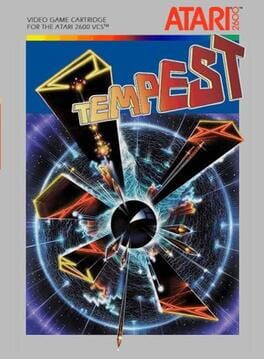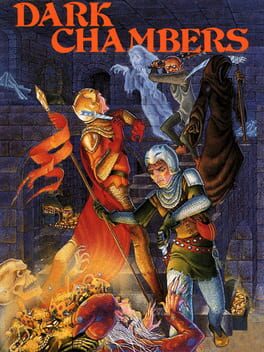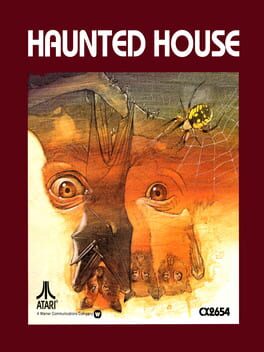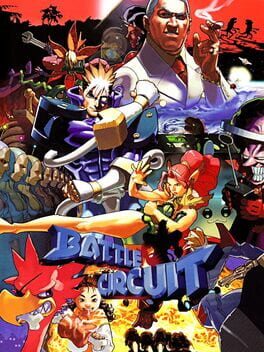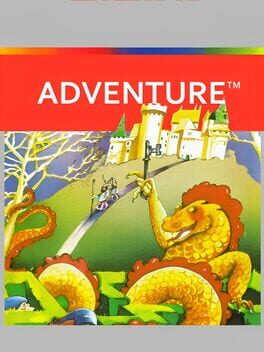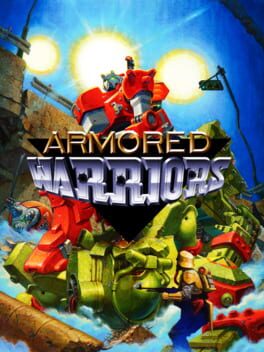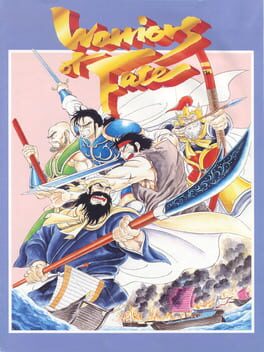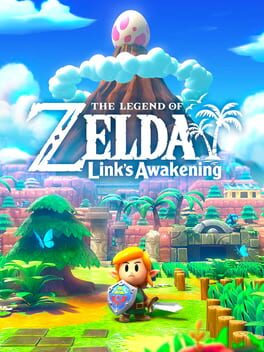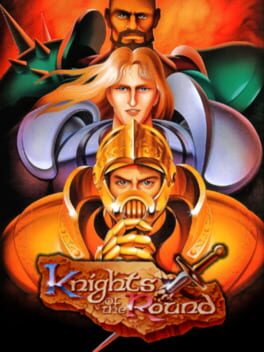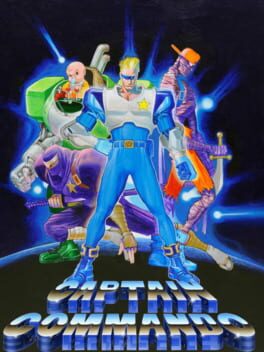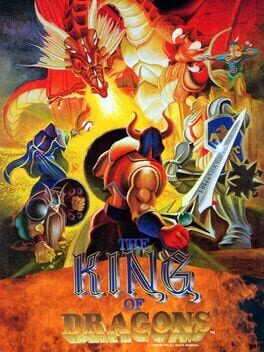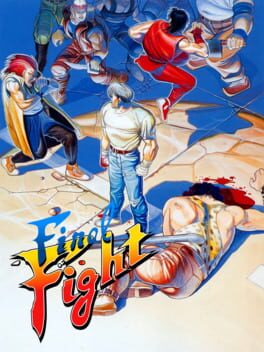ailuridae
BACKER
2016
1989
A remake of a 1983 game, Dark Chambers feels like Berzerk or Frenzy if they were dreadfully slow and boring. I've seen people liken this game to Gauntlet, but I haven't played that, so I can't compare the two titles. But I do know this: Dark Chambers isn't worth your time. It's repetitive, and it doesn't even measure up to its contemporaries. Love the ominous title screen, though.
1982
When I played the first mode of Haunted House, I was unimpressed. But by the seventh, I was a believer. This is one of the earliest examples I've seen of a game with a tangible atmosphere, and it's mechanically like a weird combination of Pac-Man and Adventure.
The titular haunted house creaks as you walk around. You'll hear noises as you navigate from room to room, some that come from you and others from the lurking enemies. In every mode after the first, the house is pitch black. You'll need to ignite and carry around matches if you want to illuminate a pathetically small radius and pick up any items. When enemies enter the room, a cool breeze rushes through and blows out your match, and lightning occasionally strikes to light the area around you while your foe draws near. There's also the musical zinger whenever you ascend or descend stairs; it's the cherry on top. All of these elements, in an Atari 2600 game from 1982? That's cool as hell.
Gameplay wise, it's mostly like Adventure. While that game was stretched out across a kingdom, Haunted House is confined to a small, symmetrical, and labyrinthine manor with four floors. Another aspect shared with Adventure is the items: there's a defensive item, a key to open locked areas, and a MacGuffin that you need to bring back to the beginning of the house to win the game. But like Pac-Man, the challenge comes from the twisty mazes, enemies who back you into a corner, and a limited life count.
Enemies are the game's weakest aspect. They're too aggressive on the later modes, and there's no good way to predict when they're going to come through doorways, leading to numerous cheap deaths. You are given nine lives, which is generous, but you'll definitely need to use at least a few of them to finish most modes. The manual says that scoring is based on the number of matches ignited and lives lost, which makes the often unfair deaths all the more annoying.
But honestly, I learned to live with it. The game is unbalanced and occasionally frustrating, but it's infinitely more alluring and and entertaining. I'll definitely revisit Haunted House in the future, and maybe someday I'll be skilled enough to finish the daunting final mode.
The titular haunted house creaks as you walk around. You'll hear noises as you navigate from room to room, some that come from you and others from the lurking enemies. In every mode after the first, the house is pitch black. You'll need to ignite and carry around matches if you want to illuminate a pathetically small radius and pick up any items. When enemies enter the room, a cool breeze rushes through and blows out your match, and lightning occasionally strikes to light the area around you while your foe draws near. There's also the musical zinger whenever you ascend or descend stairs; it's the cherry on top. All of these elements, in an Atari 2600 game from 1982? That's cool as hell.
Gameplay wise, it's mostly like Adventure. While that game was stretched out across a kingdom, Haunted House is confined to a small, symmetrical, and labyrinthine manor with four floors. Another aspect shared with Adventure is the items: there's a defensive item, a key to open locked areas, and a MacGuffin that you need to bring back to the beginning of the house to win the game. But like Pac-Man, the challenge comes from the twisty mazes, enemies who back you into a corner, and a limited life count.
Enemies are the game's weakest aspect. They're too aggressive on the later modes, and there's no good way to predict when they're going to come through doorways, leading to numerous cheap deaths. You are given nine lives, which is generous, but you'll definitely need to use at least a few of them to finish most modes. The manual says that scoring is based on the number of matches ignited and lives lost, which makes the often unfair deaths all the more annoying.
But honestly, I learned to live with it. The game is unbalanced and occasionally frustrating, but it's infinitely more alluring and and entertaining. I'll definitely revisit Haunted House in the future, and maybe someday I'll be skilled enough to finish the daunting final mode.
1997
1979
Adventure is a brief and enjoyable romp through multicolored mazes, castles, and catacombs. There are good reasons to keep replaying the game, as the various game modes and difficulty switch configurations can seriously alter your overall experience. Although it might be a bit buggy and occasionally frustrating, Adventure is easy to recommend given its short length and charming primitiveness. Fuck that bat, though.
1986
It's incredible how so many of these early Nintendo games came almost fully formed, boasting many of the elements that would go on to make their respective series so successful. Even if The Legend of Zelda can be frustrating in a modern context, as it uses the player reading the instruction manual as a crutch to elucidate many of the tricks required to reach the finish line, the game's cryptic nature and emphasis on exploration help the experience feel like solving a satisfying, Hyrule-sized puzzle box.
I would strongly recommend finishing The Legend of Zelda without a guide, only relying on in-game clues and the charming instruction manual—both of which are full of amusing early Japanese-to-English translation quirks. Not only is it a more rewarding way to play the game, but it's also a singular experience, one that's almost impossible to replicate in today's era of heavy-handed tutorials and extensive online guides. This isn't the best Zelda game, but it might be the most essential.
I would strongly recommend finishing The Legend of Zelda without a guide, only relying on in-game clues and the charming instruction manual—both of which are full of amusing early Japanese-to-English translation quirks. Not only is it a more rewarding way to play the game, but it's also a singular experience, one that's almost impossible to replicate in today's era of heavy-handed tutorials and extensive online guides. This isn't the best Zelda game, but it might be the most essential.
1994
1992
Warriors of Fate contains the hallmarks of the early '90s beat 'em ups while also offering a new, competitive angle. The game rewards you for achieving a higher score than your fellow players, which requires delivering the finishing blow to bosses and scooping up as much treasure as possible. This additional component, combined with the game's Three Kingdoms setting, helps Warriors of Fate stand out among its contemporaries.
I'm torn because on one hand, this is a pretty straightforward and uninteresting remake of Link's Awakening. I don't dig the Rankin/Bass art style, the heavy use of bloom, or the plasticky look of the visuals. The extended fast travel system is also a bit too much, allowing you to teleport everywhere with ease and uncover the map at a much quicker pace.
But on the other hand, the Chamber Dungeons mini-game is so stupid and fun that it basically redeems the game for me. Chamber Dungeons are not as fully fledged as a Mario Maker title, but they're also a small component of a 20-hour Zelda game. The challenges you unlock for them as you play through the wider game are engaging and thoughtful, and you can even save your custom dungeons to amiibos to share with friends. Maybe I'm a schmuck, but it's nice to see one excursion elevate a Zelda game from an uninspired remake to a guilty pleasure.
But on the other hand, the Chamber Dungeons mini-game is so stupid and fun that it basically redeems the game for me. Chamber Dungeons are not as fully fledged as a Mario Maker title, but they're also a small component of a 20-hour Zelda game. The challenges you unlock for them as you play through the wider game are engaging and thoughtful, and you can even save your custom dungeons to amiibos to share with friends. Maybe I'm a schmuck, but it's nice to see one excursion elevate a Zelda game from an uninspired remake to a guilty pleasure.
1991
The later levels get a bit too hectic, but Elevator Action Returns is a fun and brutally violent arcade action game. Players take elevators sideways, slantways, longways, and backways through a variety of levels, from airports to colossal skyscrapers. The objectives are straightforward, but the difficulty comes from the sheer volume of enemies and traps that stand in your way. Challenge aside, I found great satisfaction in mowing down the mobs of terrorists, which results in buckets of blood and some nice pixelated explosion effects.
Maybe someday, I'll be able to beat this without infinite credits. But, for now, I'm happy just to participate in the chaotic bloodshed.
Maybe someday, I'll be able to beat this without infinite credits. But, for now, I'm happy just to participate in the chaotic bloodshed.
1991
1991
1989
Surprisingly ambitious for a Game Boy game, Link's Awakening takes several risks by breaking away from series hallmarks like Hyrule, Zelda, and Ganon. Even if its overall structure resembles A Link to the Past—Link's Awakening even started as a remake of that title—deviations like assigning items to the primary buttons, platforming, the trading quest, collecting seashells, and a fishing mini-game help it feel like a unique experience. It might feel a bit cramped given the Game Boy's limited control scheme and 8-bit graphics, but it's arguably even more impressive for overcoming those hurdles to deliver a wonderful and memorable Zelda adventure.
Bonus points for the dreamy plot, remarkable art direction, and earworm soundtrack.
Bonus points for the dreamy plot, remarkable art direction, and earworm soundtrack.
